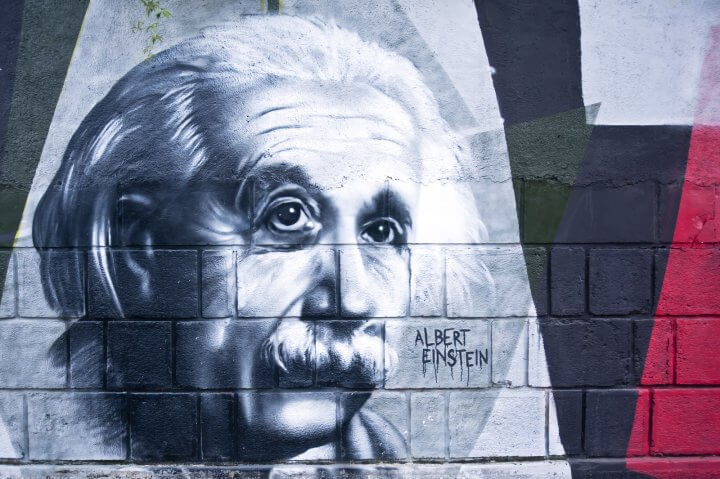Albert Einstein was a German-born physicist best known for his theory of relativity; more specifically mass-energy equivalence. His contributions to physics were vast and diverse, some of which are:
•Special theory of relativity
•General theory of relativity (extending the principle of relativity and creating a new theory of gravitation)
•Relativistic cosmology
•Capillary action
•Critical opalescence
•Statistical mechanics
•The quantum theory
•An explanation of the Brownian movement
Along with his vast experimental contributions he also contributed many scientific papers and non scientific books and in 1999 he became the “Person of the Century.” But Albert Einstein was more than a physicist; he was also a man with much more to his life.
•Einstein was born on March 14, 1879 into a Jewish family in Ulm, Wurttemberg, Germany.
•In 1880 the family moved to Munich where his father and uncle founded a company that manufactured electrical equipment. This equipment provided the first lighting for the Oktoberfest.
•Albert attended a Catholic elementary school and found out at an early age that he had speech difficulties. Even with this, he was at the top of his elementary class and school.
•When Einstein was five years old his father showed him a pocket watch. Albert gazed at the watch and realized that something in that empty space was moving the needle. This made a lasting impression on him. As a young boy he became quite interested in mechanical devices and showed great talent in mathematical subject areas.
•In 1889 Max Talmud, a friend of the family introduced Albert to key science, mathematics, and philosophy. He began to understand deductive reasoning and by the time he was twelve he had learned Euclidean geometry. This led him into his next scholastic adventure, calculus.
•In 1894 at the age of fifteen, the Einstein family moved to Italy after his fathers’ business was shut down. It was during this move that Albert began his first scientific work, “The Investigation of the State of Aether in Magnetic Fields.” Albert was left in Munich to finish high school, but withdrew in 1895 and joined his family in Pavia, Italy.
•Albert was sent to secondary school in Switzerland and lodged with the family of a Professor Jost Winteler.
•Albert graduated in 1896 and enrolled in the mathematics program at ETH
•After renouncing his German citizenship to avoid military service, he gained Swiss citizenship on February 21, 1901.
•In 1896 Mileva Maric, Einstein’s future wife enrolled at ETH as the only woman studying mathematics. They developed a budding friendship and it soon turned into romance.
Albert married Mileva on January 6, 1903. The two had a daughter in 1902 but her fate is unknown. Einstein’s mother objected to the wedding because she thought Maric was too old and physically defective.
•In 1904 they had a son, Hans Albert Einstein
•Sometime just after 1910 their second son, Eduard was born.
•February 14, 1919 Einstein and Maric divorced and Einstein remarried Elsa Lowenthal. The two were first cousins maternally, and second cousins paternally. Together they raised Elsa’s two daughters from her first marriage. Margot and Ilse
•Einstein continued to contribute his theories in physics and in 1921 was awarded the Nobel Prize in Physics for his services to Theoretical Physics. The prize money was given to his first wife Mileva Maric due to stipulations in their 1919 divorce settlement.
•Einstein was trying rigorously to find a way to unify and simplify the fundamental laws of physics. In 1950 he described his “Unified Field of Theory” in an article titled, “On the Generalized Theory of Gravitation. He became very isolated in his work much to the dismay of people who wanted to see more of his theoretical physicist work.
•On April 17, 1955 Albert Einstein experienced a ruptured aortic aneurism which led to his death. He died in Princeton Hospital the next morning at the age of seventy six. Before his cremation, Thomas Stoltz Harvey removed his brain in the hopes of be able to discover what made Einstein so intelligent.
•In 1999 he was name “Person of the Century” by Time magazine and the Gallup Poll recorded him as the fourth most admired person of the 20th Century.
Yes, Albert Einstein left his mark upon society through his love of science and experimentation. We are grateful for his insights into the physical and scientific world today.


Leave a Reply